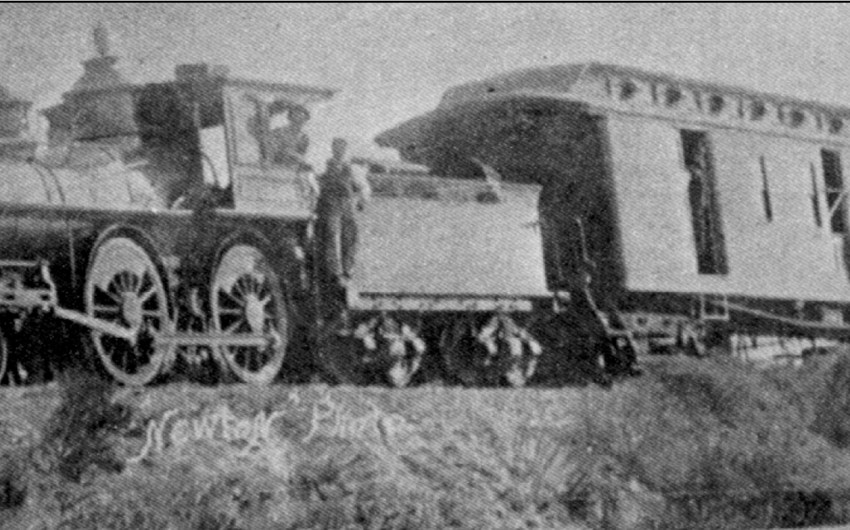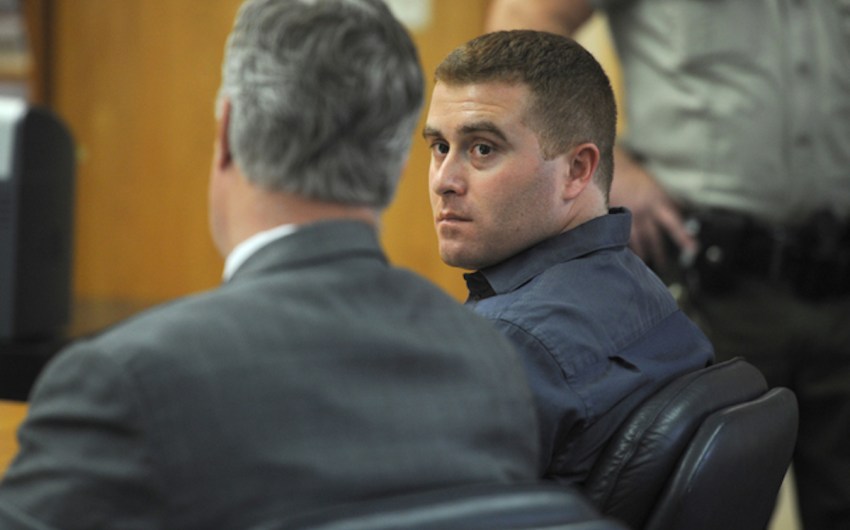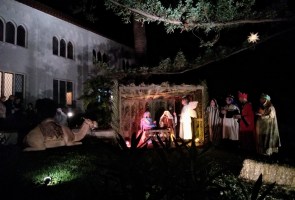The Storke KTMS Towers
The Towers Brought in a New Age of Radio Media

They are way in the background or off on the horizon as you drive down Hollister or Highway 101 or take a trip out to the University of California, Santa Barbara. They are seen in your conscious or unconscious eye, often seen but not recognized — two wispy spikes sticking up above the trees, seemingly small against the landscape but in reality very large objects. They are the Storke Radio Towers.
The early 1920s saw a new status symbol appear over the rooftops of barns and homes on the Central Coast from Montecito to Goleta — copper antenna wires leading to a new miracle in the parlor, a radio receiver. Crystal sets did not work well at first, owing to the distance of the nearest broadcasting stations in Los Angeles. Santa Barbara’s first station, KFCR, went on the air April 1, 1926. It later became KDB, the letters standing for Dorothy Barnes, the wife of the station owner.
Throughout the 1920s, on crisp nights, radio fans would clamp earphones over their heads and stay up to all hours fiddling with the vernier dials of their Atwater Kent and Grebe receivers, hoping to tune in such rare DX as KDKA in Pittsburgh. And soon such personalities as Amos ‘n Andy, Fred Allen, Joe Penner and his duck, Lum ‘n Abner, Fibber McGee, Al Pierce and his Gang and Jack Benny became a part of every Central Coast household.

Reception was greatly improved with the construction of the Storke Towers in South Central Goleta Valley. In June of 1937, T. M. Storke leased a small plot of land from Miriam More near the western end of More Mesa, where Bethlehem Steel Company erected two square tapered, 258-foot steel towers, spaced 403 feet apart to form the antenna of a new radio station bearing his initials — KTMS.
On the last day of October 1937, News-Press A.M. station KTMS went on the air with 1,000 watts of power, eventually being assigned a permanent frequency slot of 1,250 kilocycles and 2,500 watts of radiated power.
The KTMS towers were later fitted with “top hat” radiators which made the towers appear higher to radio receivers. The towers now broadcast in a 135-degree directional pattern from Malibu to Morro Bay. A round plane of copper wire is buried 1.5 feet under the ground in a spoke-like pattern for hundreds of feet around each tower. Between the towers is the transmitter building, which for 20 years had to be manned by an engineer during broadcasts to keep a continuous check on the power tubes and the crystal oven temperature, according to John Strahler, a past station engineer. Today, better electronics allow remote operation from the Santa Barbara studio location.
When the towers were first proposed, there was vigorous opposition from local pilots, who felt the radio towers constituted a navigational hazard in bad weather or after dark, but the Federal Communication Commission ruled otherwise. The towers have endured for more than 80 years.
The five Goleta cannons were found on the beach below the south tower in 1981. The station engineer related that in 1978 a steeplejack working on that tower noticed, from his perch on top, a line of black tubes lying on the beach below which he thought might be something significant. It turns out they were. Fortunately, another observer on the beach saw them again in 1981 and called for support to save these artifacts.
Today the Storke Towers are fenced from the public on property owned by Pacific Enterprises. However, they can be viewed up close by walking down the beach one-half mile east from Goleta Beach Park or a little farther away, from the Goleta Beach pier.
The towers are designated Goleta Historical Society Site U and described on a sign located on South Patterson Road near Goleta Valley Cottage Hospital.
The site of the towers is historical for another reason. For centuries, the ocean bluffs along More Mesa were the home of one of the largest Chumash Indian villages. Many burials were made there by the natives. These extended to the nearby Mescaltitlan Island now in the middle of the Santa Barbara Airport, the Gas Company, and the Sewer District properties.

In 1874, the Army Corp of Engineers (CE) was assigned the task of exploring all of the U.S. from the 100th meridian west to document its geology, flora, fauna, and archaeology. A 7-volume document summarizing the work of many scientists was published by the Army CE in 1879. Volume 7 covered the archaeology of the expedition. Dr. Harry C. Yarrow was in charge of the expedition that explored the graves of buried Indians in the Santa Barbara-Goleta area of California. The first area to be explored by a team of archaeologists was on More Mesa (below the towers) and Mescaltitlan Island and later, at Dos Pueblos.
All of these digs in 1875 were conducted by Rev. Stephen Bowers, who was working for Yarrow. All of the human remains and artifacts discovered here were sent to Prof. S. F. Baird at the Smithsonian Museum in Washington DC in 1877. The description of the artifacts was given by Dr. Putman of the Peabody Institute of Harvard University, Cambridge, Mass. in the Volume 7 on Archaeology.
References: The 1879 report referred to is by Harry Crecy Yarrow, “Report on the Operation of a Special Party for Making Ethnological Researches in the Vicinity of Santa Barbara, Cal., with a Short Historical Account of the Region Explored,” Volume 7, Archaeology, in: “Report Upon United States Geographical Surveys West of the One Hundredth Meridian” edited by Lieut. Geo. M. Wheeler, Washington: Government Printing Office, 1879. The author also referred to Goleta The Good Land, by Walker A. Tompkins, 1966; Looking Back, by Justin M. Ruhge; A Crossroads in History, by Justin M. Ruhge; and Santa Barbara News Press, November 15, 2013.
Premier Events
Sat, Dec 21
11:00 AM
Santa Barbara
Mosaic Makers Market – Holiday Weekend Market
Sun, Dec 22
11:00 AM
Santa Barbara
Mosaic Makers Market – Holiday Market Finale
Wed, Dec 25
6:00 PM
Santa Barbara
FREE Contra Dance X-mas Day💃Corwin & Grace band6-9
Sat, Dec 21
11:00 AM
Santa Barbara
Mosaic Makers Market – Holiday Weekend Market
Sat, Dec 21
12:00 PM
Santa Barbara
Gift Wrapping with Life Chronicles
Sat, Dec 21
2:00 PM
Santa Barbara
State Street Ballet’s 30th Anniversary Production of ‘The Nutcracker’
Sat, Dec 21
4:00 PM
Santa Barbara
Wine + Painting Workshop
Sat, Dec 21
5:00 PM
Santa Barbara
The Rhythm Industrial Complex: Live at Fox Wine Co
Sat, Dec 21
5:00 PM
Santa Barbara
LET IT GLOW Winter Solstice on State St.
Sat, Dec 21
5:15 PM
Santa Barbara
The Longest Night Memorial
Sat, Dec 21
5:30 PM
Santa Barbara
First United Methodist Church Living Nativity
Sat, Dec 21
6:00 PM
Santa Barbara
Captain Fatty’s Ugly Xmas Sweater Party
Sat, Dec 21
6:30 PM
Santa Barbara
Ugly Sweater Singles 30s and 40s Party!
Sat, Dec 21 11:00 AM
Santa Barbara
Mosaic Makers Market – Holiday Weekend Market
Sun, Dec 22 11:00 AM
Santa Barbara
Mosaic Makers Market – Holiday Market Finale
Wed, Dec 25 6:00 PM
Santa Barbara
FREE Contra Dance X-mas Day💃Corwin & Grace band6-9
Sat, Dec 21 11:00 AM
Santa Barbara
Mosaic Makers Market – Holiday Weekend Market
Sat, Dec 21 12:00 PM
Santa Barbara
Gift Wrapping with Life Chronicles
Sat, Dec 21 2:00 PM
Santa Barbara
State Street Ballet’s 30th Anniversary Production of ‘The Nutcracker’
Sat, Dec 21 4:00 PM
Santa Barbara
Wine + Painting Workshop
Sat, Dec 21 5:00 PM
Santa Barbara
The Rhythm Industrial Complex: Live at Fox Wine Co
Sat, Dec 21 5:00 PM
Santa Barbara
LET IT GLOW Winter Solstice on State St.
Sat, Dec 21 5:15 PM
Santa Barbara
The Longest Night Memorial
Sat, Dec 21 5:30 PM
Santa Barbara
First United Methodist Church Living Nativity
Sat, Dec 21 6:00 PM
Santa Barbara
Captain Fatty’s Ugly Xmas Sweater Party
Sat, Dec 21 6:30 PM
Santa Barbara


























You must be logged in to post a comment.